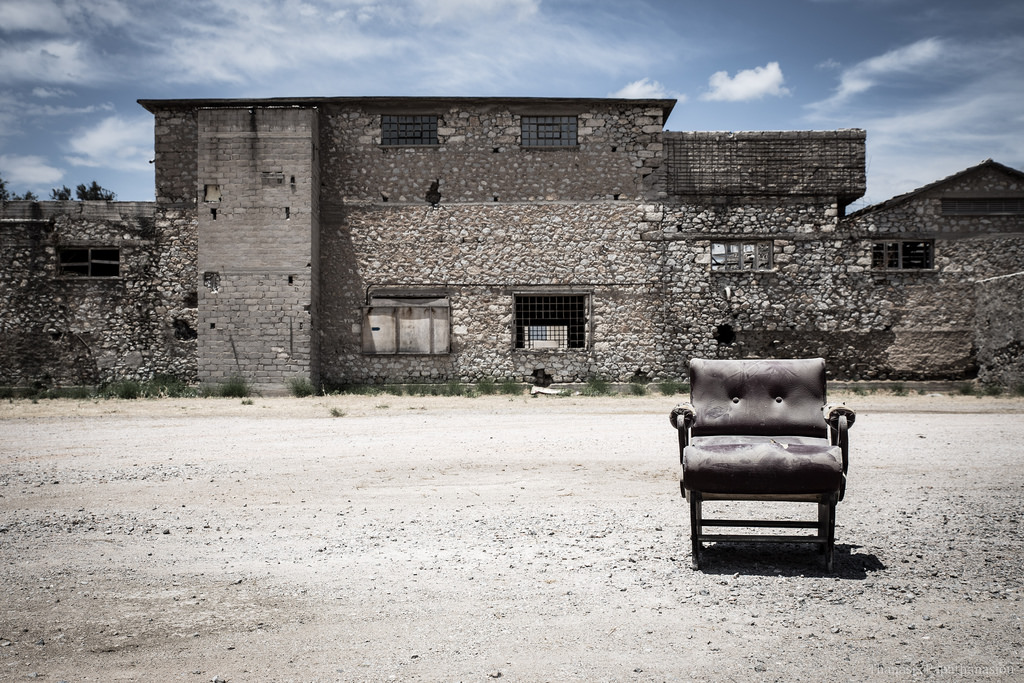Monuments in Ruins, Ruins as Monument Evaluation, Protection, Enhancement & Management

Elefsina, Old Oil Mill | by Th.Papathanasiou
Ruins, archaeological and historical, present a special category of monuments that ensue as a result of natural wear and tear, abrupt natural catastrophes, use, abandonment or intentional destruction. They represent extreme cases of monumentality because they can accept no other use but their ruinous state of existence.
Ruins as physical remains present materiality, as lacunae suggest their original completion, while as mediators between form and content are subjects to theory and philosophy of preservation. Additionally, as leftovers of edifices subjected to destructive forces, they embed respective monuments as a whole and the act of their destruction alike. As a result, ruins are not passive remains but active cultural agents that transverse their status of remaining parts of a lost whole and accrue an identity of their own as ruins; they become monuments qua ruins and not just ruins of monuments.
Ruins refer not only to all archaeological sites in terms of materiality but as a conceptual category they refer to all monuments as remaining there to remind. So, are ruins living entities or dead corpses? And in both cases, are they cultural assets or cultural agents?
If dead, assets or agents, what kind of cultural symbolism can they attain and do attain? Could then preservation be assimilated to a cult of what is bygone? Are ruinous landscapes cemeteries of the past?
If alive, what kind of life they partake to and in what sense? How could their life be best enhanced and managed so that to accommodate change and follow the cultural dynamics they partake to?
Historically ruins have been appreciated either as fragmented parts conveying the whole they once belonged to, inviting thus the beholder to complete the image by comprehending the whole out of part of it in the Classical tradition; as fragments celebrating –or mourning – the bygone and forever lost unity in the romantic tradition or even as figural curiosities in the picturesque tradition. Appreciation of ruins has throughout history been demonstrated even as a cult of artificial ruins.
Despite the great influence they exert to audiences of all kinds and the fact that they represent all archaeological places almost by definition and other edifices of all historic periods, there has been hardly any debate in recent decades. Discussions in historic preservation have been polarized between total anastylosis and reconstruction to stabilization in arbitrarily selected ruinous situations without establishing a valid theoretical framework to guide everyday practice.
The 4th HMO HerMa International Conference on Heritage Management which took place on the 22-4 September 2017 in Eleusis, managed to contribute to this so far missing debate by reconsidering ruins in their material existence as physical remains, in their suggestiveness as lacunae and mainly in their theoretical and philosophical potential to inform heritage management of all kinds at all scales, from museum objects to historical buildings, archaeological sites, historic centers and historical landscapes.
The following issues were the ones that the conference was evolved around:
- RUINS OF WHAT/AS WHAT? Where theoretical issues of identity, relation of parts and wholes as well as the authenticity of monuments in relation to their remaining material substance and other theoretical issues on ruins were the main focus.
- RUINS FOR WHAT/WHERE? Focus was put on the purposes, criteria, hierarchies and decision making in the preservation of ruinous monuments through case studies of theory and practice in ruins management.
- RUINS FOR WHOM? The different approaches of stakeholders and experts alike in relation to the empathy to ruins, ruins of own or other culture, interpretation of part in relation to the whole and management strategies to accentuate, remedy, mitigate or even celebrated the fragmented condition of the ruin. This session referred to sociological, anthropological, psychological approaches.
- RUINS HOW? Here the ruination processes, the subsequent functioning of ruins and the diverse methods of documentation, technologies of stabilization and presentation to the public, were the main issues discussed.

Vassilis GANIATSAS / [email protected] / https://www.arch.ntua.gr/en/node/134
Full Professor of ‘Architectural Syntheses & Theory of Architectural Design’ and Director of the Architectural Morphology Lab-School of Architecture- National Technical University of Athens (NTUA). Educated in Classics, Philosophy and Architecture (Dipl.-M. Arch 1982, National Technical University of Athens / Ph.D. 1987, University of Edinburgh).
Researches/publishes/teaches Philosophy, Theory, Methodology and Studio of architectural and Urban design (through Phenomenology, Hermeneutics and Ontology) & Theory, Philosophy and architectural/urban design for Cultural/Natural Heritage Conservation and HUL Historic Urban Landscape, in 20 research programmes and over 100 publications.
His Architectural/Urban Design projects have been awarded with 17 prizes in National/European Competitions, the 2010 EUROPA NOSTRA Medal for Architectural Preservation. Twice nominated for the European Union/Mies van der Rohe prize (2015,2017).
Invited Professor in many schools of architecture in Europe, US and Japan.
Expert member of the International Scientific Committees ‘THEOPHIL-Theory and Philosophy of Conservation’ and ‘ICIP – Interpretation and Presentation of Monuments’ and member of the board/teaching staff of MA – Heritage Management (Univ. of Kent / AUEB).
His book ‘Creative Conservation of Heritage Values’ is forthcoming by Francis &Taylor.
